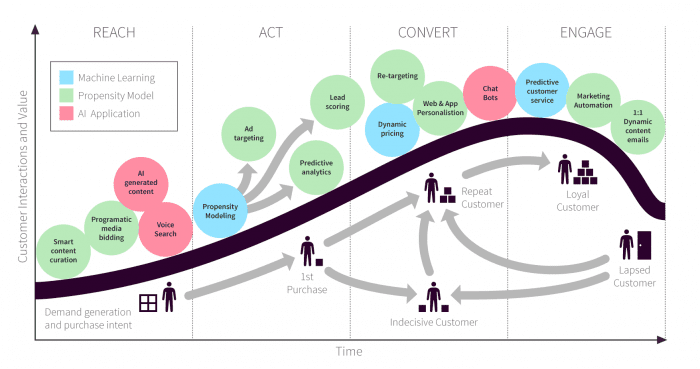Using machine learning and predictive intelligence in the B2B Buyer journey
AI (Artificial Intelligence) has become a business buzzword this past year, even featuring in the mainstream media. AI includes any kind of computer program which actively seeks to mimic a human capability, such as understanding speech, recognizing images or responding to questions. When it comes to using AI in the sales cycle, there are two technologies which are particularly useful, and it’s worth drilling down and understanding them rather than focusing on the nebulous term ‘AI’. These are Machine Learning and Predictive Intelligence.
These two technologies can work in tandem to provide your sales team with a way to target the hottest and most qualified leads, and thus save time and bring in more revenue.
The graphic below shows the range of different artificial intelligence, machine learning, and propensity modeling techniques which can be applied and different stages of the customer lifecycle.

Of particular relevance to sales teams will be those technologies in the ‘Act’, and ‘Convert’ stages, such as propensity modeling, lead scoring and dynamic pricing. Lead scoring is particularly useful for B2B sales processes, especially if you have a consultative sales process. Because each sale takes a considerable amount of the sales teams time, accurately scoring leads can help to focus time where it is most productive, allowing the sales team to make more sales and prevent wasting time on leads who would never convert.
If you want to know more about how B2B marketers can use AI applications across the buyer journey, you can view our full post from Dave Chaffey on the subject on the SparkLane blog.








